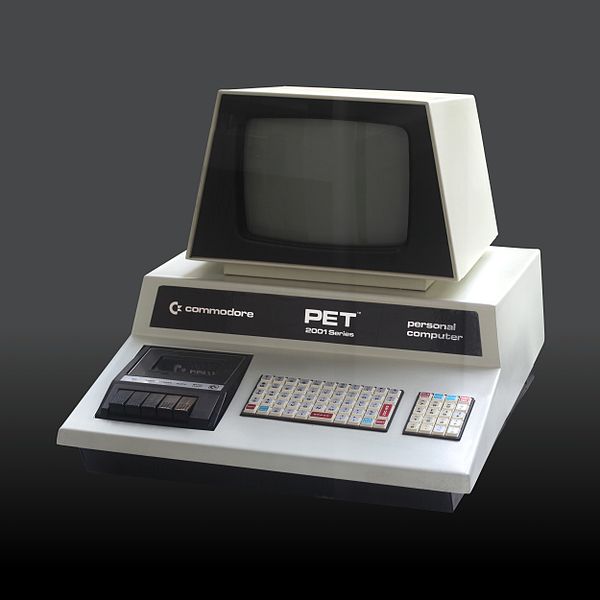
Not too long ago the founders and shapers of much of our IT world were dreaming up new information technologies, tools and processes that we didn’t know we needed. These tinkerers became the establishment luminaries that we still ove or hate — Microsoft, Dell, HP, Apple, Motorola and IBM. And, of course, they are still around.
But the world that they constructed is imploding and nobody really knows where it is heading. Will the leaders of the next IT revolution come from the likes of Google or Facebook? Or as is more likely, is this just a prelude to a more radical shift, with seeds being sown in anonymous garages and labs across the U.S. and other tech hubs. Regardless, we are in for some unpredictable and exciting times.
From ars technica:
Change happens in IT whether you want it to or not. But even with all the talk of the “post-PC” era and the rise of the horrifically named “bring your own device” hype, change has happened in a patchwork. Despite the disruptive technologies documented on Ars and elsewhere, the fundamentals of enterprise IT have evolved slowly over the past decade.
But this, naturally, is about to change. The model that we’ve built IT on for the past 10 years is in the midst of collapsing on itself, and the companies that sold us the twigs and straw it was built with—Microsoft, Dell, and Hewlett-Packard to name a few—are facing the same sort of inflection points in their corporate life cycles that have ripped past IT giants to shreds. These corporate giants are faced with moments of truth despite making big bets on acquisitions to try to position themselves for what they saw as the future.
Predicting the future is hard, especially when you have an installed base to consider. But it’s not hard to identify the economic, technological, and cultural forces that are converging right now to shape the future of enterprise IT in the short term. We’re not entering a “post-PC” era in IT—we’re entering an era where the device we use to access applications and information is almost irrelevant. Nearly everything we do as employees or customers will be instrumented, analyzed, and aggregated.
“We’re not on a 10-year reinvention path anymore for enterprise IT,” said David Nichols, Americas IT Transformation Leader at Ernst & Young. “It’s more like [a] five-year or four-year path. And it’s getting faster. It’s going to happen at a pace we haven’t seen before.”
While the impact may be revolutionary, the cause is more evolutionary. A host of technologies that have been the “next big thing” for much of the last decade—smart mobile devices, the “Internet of Things,” deep analytics, social networking, and cloud computing—have finally reached a tipping point. The demand for mobile applications has turned what were once called “Web services” into a new class of managed application programming interfaces. These are changing not just how users interact with data, but the way enterprises collect and share data, write applications, and secure them.
Add the technologies pushed forward by government and defense in the last decade (such as facial recognition) and an abundance of cheap sensors, and you have the perfect “big data” storm. This sea of structured and unstructured data could change the nature of the enterprise or drown IT departments in the process. It will create social challenges as employees and customers start to understand the level to which they are being tracked by enterprises. And it will give companies more ammunition to continue to squeeze more productivity out of a shrinking workforce, as jobs once done by people are turned over to software robots.
There has been a lot of talk about how smartphones and tablets have supplanted the PC. In many ways, that talk is true. In fact, we’re still largely using smartphones and tablets as if they were PCs.
But aside from mobile Web browsing and the use of tablets as a replacement for notebook PCs in presentations, most enterprises still use mobile devices the same way they used the BlackBerry in 1999—for e-mail. Mobile apps are the new webpage: everybody knows they need one to engage customers, but few are really sure what to do with them beyond what customers use their websites for. And while companies are trying to engage customers using social media on mobile, they’re largely not using the communications tools available on smart mobile devices to engage their own employees.
“I think right now, mobile adoption has been greatly overstated in terms of what people say they do with mobile versus mobile’s potential,” said Nichols. “Every CIO out there says, ‘Oh, we have mobile-enabled our workforce using tablets and smartphones.’ They’ve done mobile enablement but not mobile integration. Mobility at this point has not fundamentally changed the way the majority of the workforce works, at least not in the last five to six years.”
Smartphones make very poor PCs. But they have something no desktop PC has—a set of sensors that can provide a constant flow of data about where their user is. There’s visual information pulled in through a camera, motion and acceleration data, and even proximity. When combined with backend analytics, they can create opportunities to change how people work, collaborate, and interact with their environment.
Machine-to-machine (M2M) communications is a big part of that shift, according to Nichols. “Allowing devices with sensors to interact in a meaningful way is the next step,” he said. That step spans from the shop floor to the data center to the boardroom, as the devices we carry track our movements and our activities and interact with the systems around us.
Retailers are beginning to catch on to that, using mobile devices’ sensors to help close sales. “Everybody gets the concept that a mobile app is a necessity for a business-to-consumer retailer,” said Brian Kirschner, the director of Apigee Institute, a research organization created by the application infrastructure vendor Apigee in collaboration with executives of large enterprises and academic researchers. “But they don’t always get the transformative force on business that apps can have. Some can be small. For example, Home Depot has an app to help you search the store you’re in for what you’re looking for. We know that failure to find something in the store is a cause of lost sales and that Web search is useful and signs over aisles are ineffective. So the mobile app has a real impact on sales.”
But if you’ve already got stock information, location data for a customer, and e-commerce capabilities, why stop at making the app useful only during business hours? “If you think of the full potential of a mobile app, why can’t you buy something at the store when it’s closed if you’re near the store?” Kirschner said. “Instead of dropping you to a traditional Web process and offering you free shipping, they could have you pick it up at the store where you are tomorrow.”
That’s a change that’s being forced on many retailers, as noted in an article from the most recent MIT Sloan Management Review by a trio of experts: Erik Brynjolfsson, a professor at MIT’s Sloan School of Management and the director of the MIT Center for Digital Business; Yu Jeffrey Hu of the Georgia Institute of Technology; and Mohammed Rahman of the University of Calgary. If retailers don’t offer a way to meet mobile-equipped customers, they’ll buy it online elsewhere—often while standing in their store. Offering customers a way to extend their experience beyond the store’s walls is the kind of mobile use that’s going to create competitive advantage from information technology. And it’s the sort of competitive advantage that has long been milked out of the old IT model.
Nichols sees the same sort of technology transforming not just relationships with customers but the workplace itself. Say, for example, you’re in New York, and you want to discuss something with two colleagues. You request an appointment using your mobile device, and based on your location data, the location data of your colleagues, and the timing of the meeting, backend systems automatically book you a conference room and set up a video link to a co-worker out of town.
Based on analytics and the title of the meeting, relevant documents are dropped into a collaboration space. Your device records the meeting to an archive and notes who has attended in person. And this conversation is automatically transcribed, tagged, and forwarded to team members for review.
“Having location data to reserve conference rooms and calls and having all other logistics be handled in background changes the size of the organization I need to support that,” Nichols said.
The same applies to manufacturing, logistics, and other areas where applications can be tied into sensors and computing power. “If I have a factory where a machine has a belt that needs to be reordered every five years and it auto re-orders and it gets shipped without the need for human interaction, that changes the whole dynamics of how you operate,” Nichols said. “If you can take that and plug it into a proper workflow, you’re going to see an entirely new sort of workforce. That’s not that far away.”
Wearable devices like Google’s Glass will also feed into the new workplace. Wearable tech has been in use in some industries for decades, and in some cases it’s just an evolution from communication systems already used in many retail and manufacturing environments. But the ability to add augmented reality—a data overlay on top of a real world location—and to collect information without reaching for a device will quickly get traction in many enterprises.
Read the entire article here.
Image: Commodore PET (Personal Electronic Transactor) 2001 Series, circa 1977. Courtesy of Wikipedia.
 The world has lost a person of true grace, peace and morality. We honor Nelson Mandela, who passed away on December 5, 2013. First, a prisoner for 27 years of racist apartheid, and then a forgiving president of a healing post-apartheid nation, Mandela was a shining example — to us all — of the best qualities of humanity. May his Long Walk continue…
The world has lost a person of true grace, peace and morality. We honor Nelson Mandela, who passed away on December 5, 2013. First, a prisoner for 27 years of racist apartheid, and then a forgiving president of a healing post-apartheid nation, Mandela was a shining example — to us all — of the best qualities of humanity. May his Long Walk continue…

 [div class=attrib]From The New Yorker:[end-div]
[div class=attrib]From The New Yorker:[end-div]